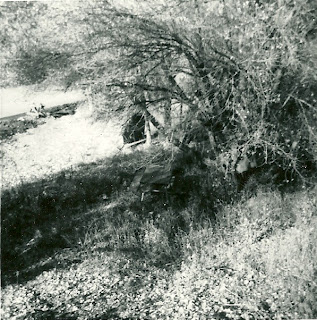Topics that interest me include, California Mormon history, Mormon Handcart history, WWII history, Civil War history
Labels
- 9/11
- Abraham Lincoln
- Adolf Hitler
- African American History
- Argentina
- Bear Flag Revolt
- Bear River Battle
- Book Review
- Book of Mormon
- Brigham Young
- California History
- California Indians
- California Missions
- Civil War
- Donner Party
- Emancipation Proclamation
- English history
- Eva Peron
- Frederick Douglass
- Gettysburg
- Gettysburg Address
- Ghost Dance
- Gold Star Mothers
- Halloween
- Hyrum Crusader
- Hyrum Utah
- Inca
- Isaac Wardle
- Jewish Holocaust
- Joseph Smith
- Ken Burns
- Korean War
- Manteca
- Martin Handcart Company
- Memorial Day
- Mormon Battalion
- Mormon Trail
- Mormon handcart rescuers
- Mormon history
- Mormon music
- Mormon pioneers
- Mormons
- Mormons in England
- Native American Art
- Native American History
- Native American Prophecies
- Native American Prophets
- Native American biographies
- Native Americans
- New Hope
- Olympics
- Pearl Harbor
- Pioneers
- Railroad
- Reorganized Church
- San Joaquin
- San Joaquin City
- San Joaquin River
- South Jordan
- Sports
- The West
- The church of Jesus Christ of Latter-day Saints
- U.S. History
- U.S. Navy
- Utah history
- WWI
- WWII
- archeology
- assassination
- basketball
- biography
- cache valley
- civil rights
- documentary
- emancipation
- ghost towns
- gold rush
- handcart companies
- handcart pioneer
- handcart rescuers
- historical documentary
- historical reenactment
- motivational movies
- movie review
- music
- philately
- sports movies
- weapons
- women
Saturday, October 13, 2012
Camp Hollow, Hyrum, Utah: When History Changes
In my youth, Camp Hollow was almost a sacred place, where the first year in Hyrum, the pioneers had built dug outs into the hill the side of the hill to ward off the cold. School field trips took us there to hear the stories of these pioneers.There was a place to picnic, but truthfully it was underused.
Then one summer that history changed. This must have been 1977. A contractor decided to develop the property, the monument was moved, and the story changed to anywhere along the ridge, which runs a mile or so, was the original spot, we're not sure exactly where. The monument was moved to the rodeo grounds park, about a half mile away. No trees or picnic table; but park grass, a playground and tennis courts.
Subscribe to:
Post Comments (Atom)









Comment from Leeanne Nielsen Larsen, facebook
ReplyDeleteMarkers and Monuments Database
Camp Hollow (2)
(Monument A) CAMP HOLLOW On April 6, 1860 the first pioneers of Hyrum encamped on this stream, they lived in wagon boxes, shelters dug into the banks, tilled and planted about one hundred acres of virgin soil. Later in the fall, following the advice of Apostle Ezra Taft Benson, they moved about one mile south west, built a fort and named the place Hyrum in honor of the beloved brother of the prophet Joseph Smith, both of whom were martyred at Carthage, Illinois June 27, 1844. HEADS OF FAMILIES Ira Allen Niels B. Nielsen Hugh Parks Andrew A. Anderson Thomas Williams George Nielsen Calvin Bingham Christopher Olsen Andrew A. Allen Andrew Nielsen Alonzo Bingham Soren Neilsen Alva Benson Adam Smith Hans Monsen Oliver McBride William Williams Noah Brimhall David Osborn Jens Jensen Sr. Jonas Halversen Hans E. Nielsen David Parks Rasmus Jensen ERECTED 1962 (Monument B: Plaque on post, 4' H, metal) HISTORY OF CAMP HOLLOW 125 YEARS LATER In March 1860 a group of pioneers left Cedar City to settle in Cache Valley. They explored the valley and decided to make a settlement about 5 miles east of Old Fort Wellsville, called Camp Hollow. These pioneers led by Ira Allen, arrived on April 8, 1860. At first they lived in wagon boxes or tents. Those that didn't have these, built 13 dugouts, holes in ground with logs at west end for wall. Larger logs were placed over top with thick covering over the branches. The settlers planted 100 acres of corn, wheat, oats and barley for winter. More families joined them and they decided they needed a townsite with more water and with higher and better drained land. In the fall of 1860 Camp Hollow was deserted. Monument moved by Hyrum Youth Council to northwest corner of Hyrum East Park
Site Information
Location: 600 E Park Drive
HYRUM
CACHE County
Eileen Flaherty James: Camp Hollow is on 600 east and about 400 north. They have a marker there. For a while the marker was on the northwest corner of the park by the Rodeo grounds. A few years ago they made a small picnic area back where it really was. It is on that lower road into Hyrum that comes off at an angle.
ReplyDeleteIt isn't on Park Drive anymore. That is the rodeo ground address.
The above posts are from Facebook. It would appear Camp Hollow was restored closer to the original location
ReplyDeleteI visited Camp Hollow and it has ben restored with a nice litttle park
ReplyDeleteWhen I was in first grade my family moved to the street south of Camp Hallow. I spent much of my childhood and teenage years playing in Camp Hallow where neighborhood kids built makeshift rafts and floated the small pond, fished, built tree huts, played in what could have been dugouts, and would sleigh in the snow during winter. A childhood full a great memories.
ReplyDelete